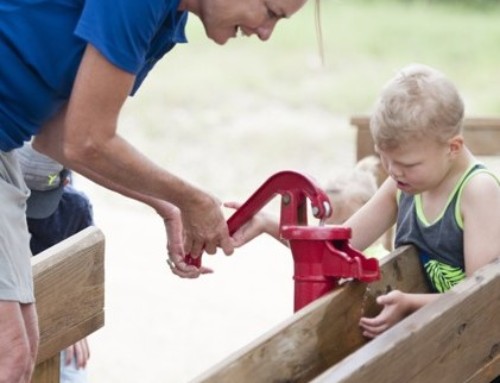By Axel Bokiba (Milton Roy)
Originally published by Upstream Pumping.
High performance, reliability and efficiency are required in remote offshore fields.

Companies that operate in the Gulf of Mexico are upgrading their aging equipment with more rugged hardware. (Courtesy of Milton Roy)
The landscape for operators, equipment providers, and engineering, procurement and construction (EPC) companies working in the Gulf of Mexico has forever changed. While safety has always been paramount, in a post-Macondo operating environment, safety and security regulations have increased to a new, higher level. These enhanced safety requirements come at a time when the industry is moving into deeper water offshore to find and exploit new reserves. While some may see this as a challenge, others view it as an opportunity to modernize and improve existing infrastructure and deploy new technology.
Technology
Offshore drilling in the Gulf of Mexico dates back to 1910, when the first true offshore drilling operation began in Louisiana. By 1930, offshore platforms reached depths of 300 feet, and 20 years later, the scope expanded to 1,000 feet. By 1970, depths exceeded 2,000 feet. As survey and exploration capabilities improved in the 1980s, larger reserves were discovered thousands of feet under the sea floor. Platform and drilling technology adapted to meet these new deepwater requirements. By 1990, drilling technology could reach 3,000 feet and 10,000 psi. Today, operators work in water depths exceeding 10,000 feet and in total vertical depths reaching an additional 30,000 feet below the seabed.
With more than 48,000 wells, the Gulf of Mexico is one of the most heavily drilled offshore areas in the world. After several decades of successful harvesting, offshore development has reached the deeper waters of the Outer Continental Shelf, where massive deposits remain locked in structures below the salt weld that cuts through the Gulf Coast’s sediment layers. These deposits, which sit below thousands of feet of water, and in some cases 25,000 to 30,000 feet below the seabed, may represent the largest new discovery in decades.
Operators and EPCs working in these environments must have upgraded rigs with greater load capacity; larger casing strings that can reach depths of 30,000 feet; and new pumps that can deliver 20,000 psi and withstand the extreme temperatures and pressures that accompany operations at these depths.
Metering Pumps
Metering pumps play a critical role in deepwater offshore production. They keep oil moving by injecting chemicals—such as methanol, monoethylene glycol and corrosion inhibitors—into main lines to improve flow and product recovery. These chemicals prevent hydrate formation, wax and scale deposits, and corrosion. If the injection of these chemicals stops, the entire production of the platform can come to a halt.
In addition to creating the need for improved equipment, deepwater production presents new compliance, safety and security challenges. Companies that operate in the Gulf of Mexico are slowly upgrading their aging equipment with new, more rugged hardware that can operate safely and reliably for decades. Government regulations require that new equipment being deployed in the Gulf of Mexico be manufactured to the highest standards. The resources devoted to preventive maintenance is greater than ever. This means that the equipment must be made to exacting standards to provide long-term safety and reliability.
Responding to these changes and evolving requirements, one manufacturer developed an American Petroleum Institute (API) 675 metering pump that delivers 20,000 psig to withstand the extreme pressures associated with operating at deeper levels. Although metering pumps are relatively small components on a platform, they play a critical role.
Their function is analogous to a rivet on an airplane wing: if that small component fails, the entire enterprise can be compromised. Because the loss of a single day of production vastly exceeds the cost of the pump, the reliability of the equipment is critical.
As stated earlier, the need for reliability is also magnified as exploration and drilling efforts extend into deeper waters in which temperature and pressure extremes increase as the geology changes. Regardless of the region, operators need to reach far below the sea bed, where back pressure can measure 5 to 7 times greater than at the sea floor. Metering pumps in these environments must deliver 20,000 psi and the control necessary to dose wells consistently and accurately while adapting to the changing conditions of the well’s life cycle.
Delivering massive amounts of hydraulic power is another requirement. However, the pumps must be highly efficient in delivering this power to conserve electrical energy, which is a precious commodity on an offshore platform that autonomously produces its own electricity. Any piece of equipment used in this environment must be efficient.
To accommodate the space limitations and for increased safety, the new metering pump was engineered to provide the greatest efficiency possible and to fit into vertical or horizontal motor configurations for a smaller deck footprint that can accommodate different space requirements. The weight of a pump or other piece of equipment is a significant concern for integrators and EPCs, because even the addition of ten pounds can make a big difference. Performance, reliability and efficiency often impose conflicting design requirements. Striking the right balance is critical.
About the author:
As global product line manager for Milton Roy (an Accudyne Industries brand), Axel Bokiba leads the company’s strategic marketing activity for the Milton Roy brand in all global markets. He oversees and directs a number of market research projects and detailed customer insights on industry sectors and end-user applications. He may be reached at axel.bokiba@miltonroy.com. For more information on Milton Roy’s Primeroyal X technology, visit www.miltonroy.com.




